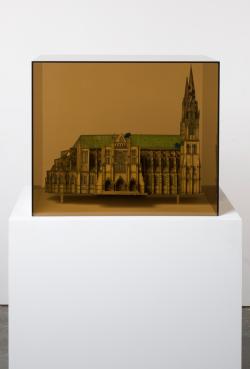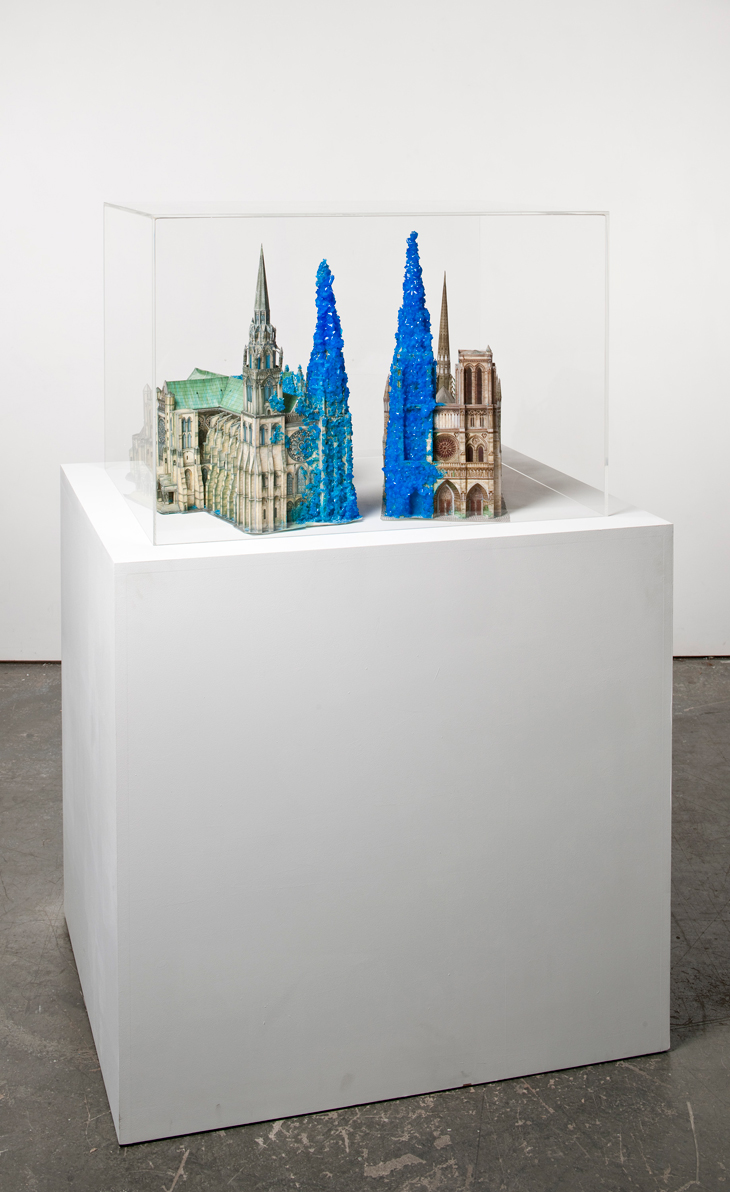

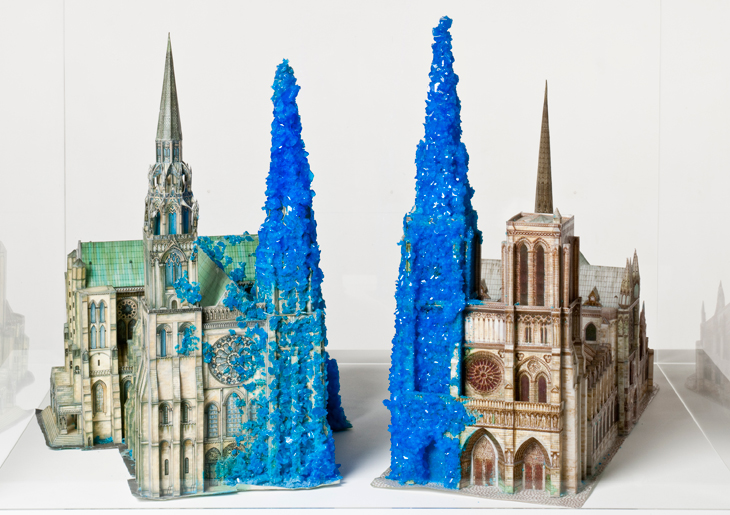
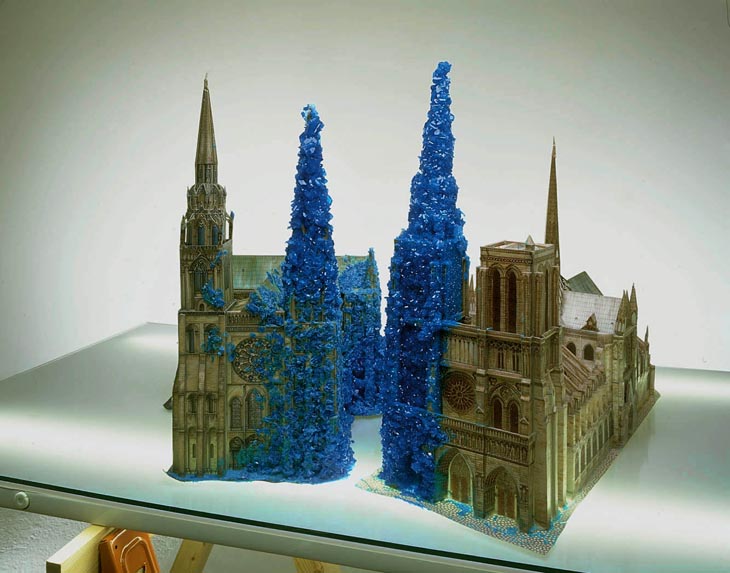
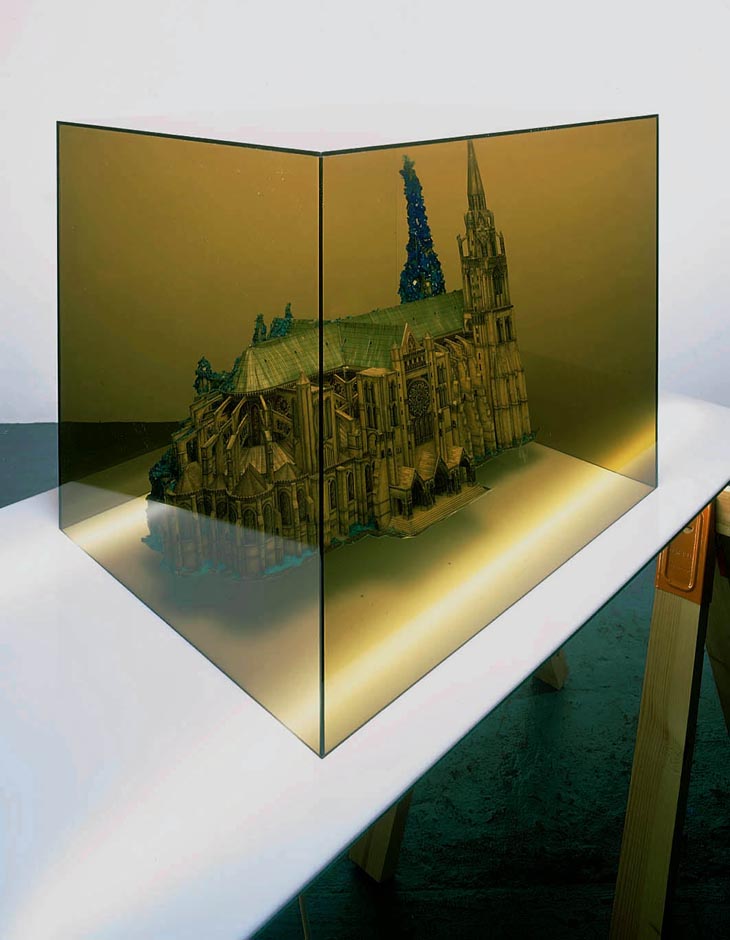


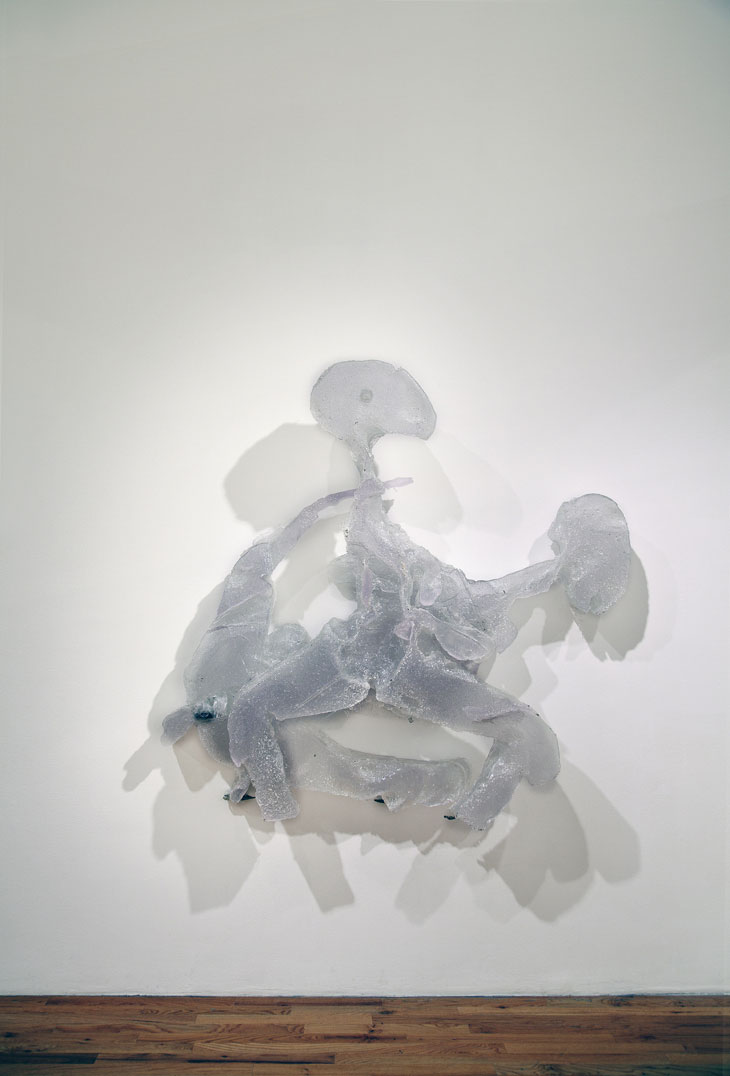
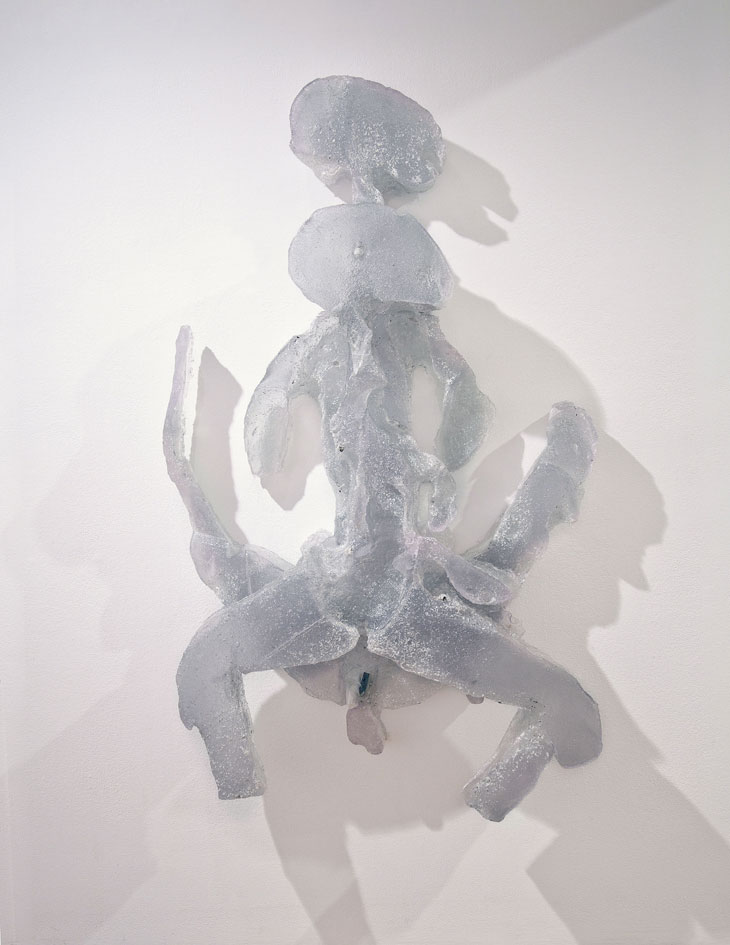
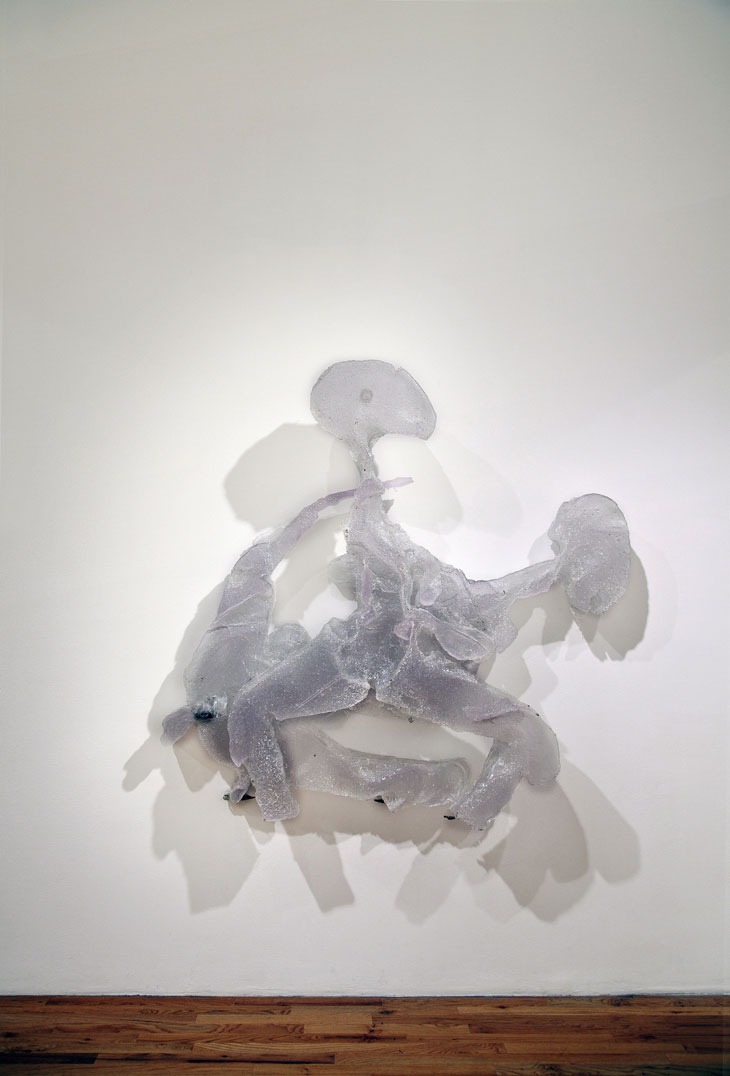
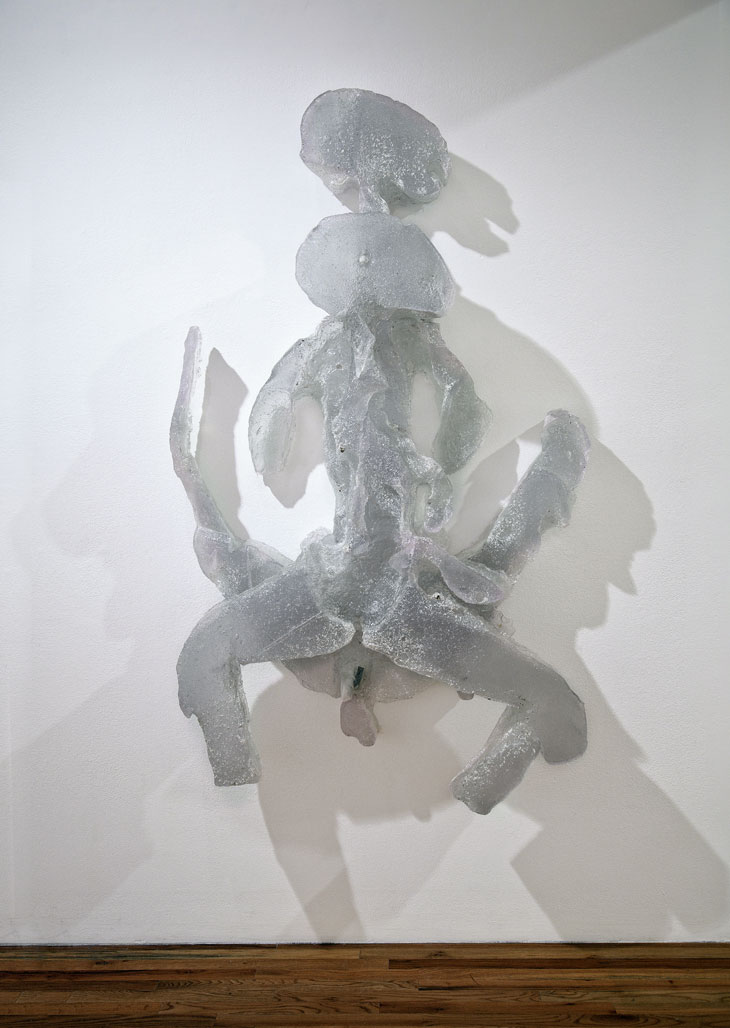
Roger Hiorns
Hiorns’ inconsistent sculptural practice rebels against the idea of unquestioned limitation in art and, by extension, calls for a liberation of the assumed status quo on a broader sphere.
Roger Hiorns’ sculptural practice meditates on the act of artistic creation, observing what happens when the process is handed over to reactive, “living†material and its metamorphoses. Copper Sulphate Chartres and Copper Sulphate Notre-Dame and Leaning Chartres With Cobalt and Copper Crystals, both from his Goldsmiths degree show in 1996, as well as his more recent large-scale installation ‘Seizure’, highlight his apparently no-hands method: a chemical solution is allowed to precipitate and take over an existing object or space, and a found form and its meaning is transformed, as if by self-design. The way crystal formations shape themselves on these cardboard models creates a living sculpture, reminiscent of creeping ivy on statues, of historical ruin; it also undoubtedly recalls the slow-forming processes of geology, suggesting a latent constant potential for material transformation. Many of Hiorns’ three-dimensional projects yield to the autonomous generative properties of his chosen substance (crystallising fluid, detergent foam, fire) to ‘isolate’ objects, to make us conscious of their origins and their contexts. His diptych Untitled (2010) combines ordinary and esoteric materials – polyurethane, polyester and brain matter – to explore transparency as a sculptural property.“We’re surrounded by codified practices consistently imposed on us by dominant objects. We’re under a narrow coercion from the objects that we design for ourselves. Of course, this question is strikingly obvious: Are we a balanced society? Can we retool our objects, perhaps? What would that involve, and is it possible to transgress the continuous production of next-generation objects, to insert transgressive stimulus, the cross of semen and the light bulb, for example? To retool, simply to ask: Do we live in a society where we make objects towards the darker side of our psyche? Is it useful to continue this procedure even further, with more necessity and speed?"





